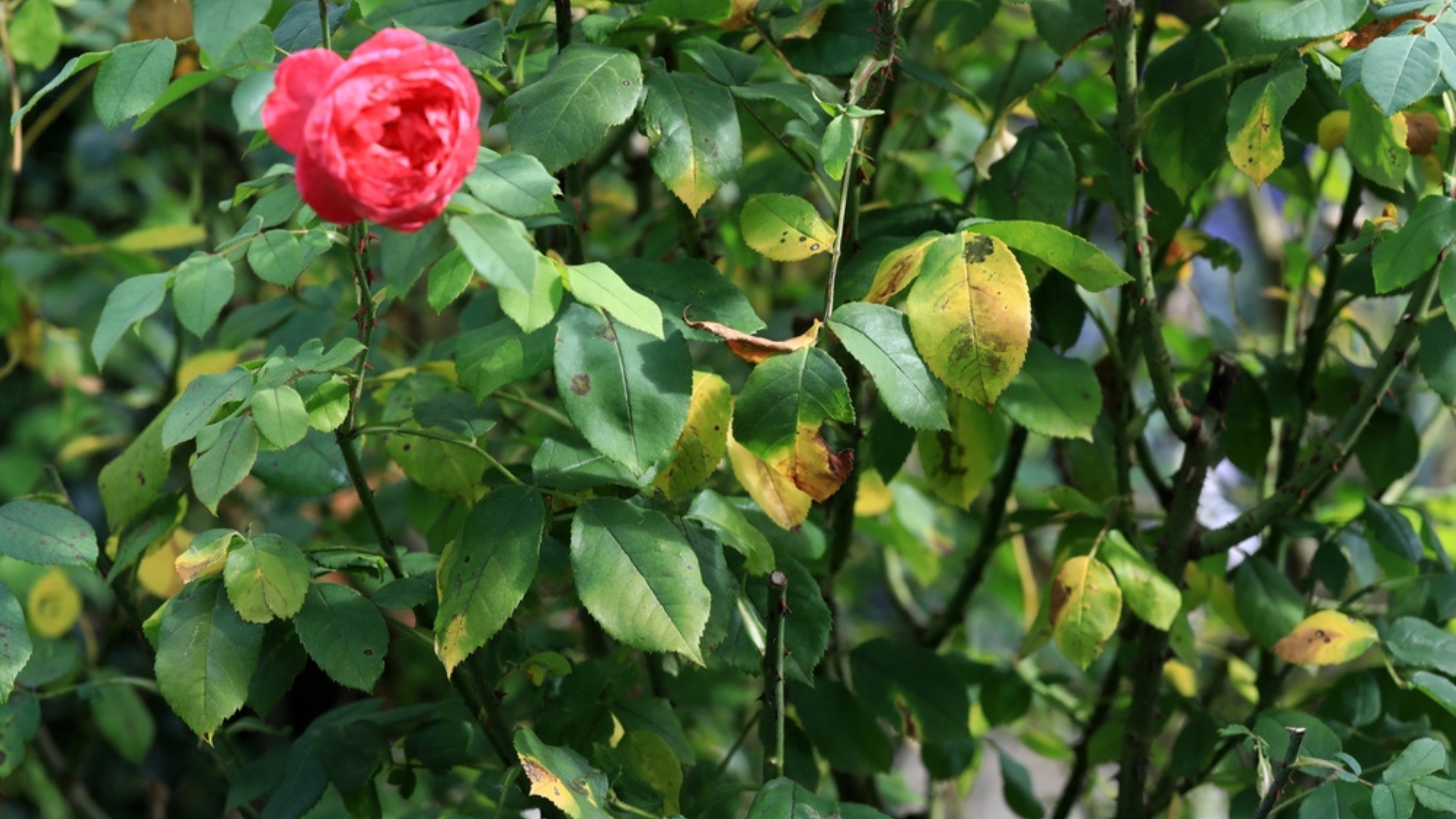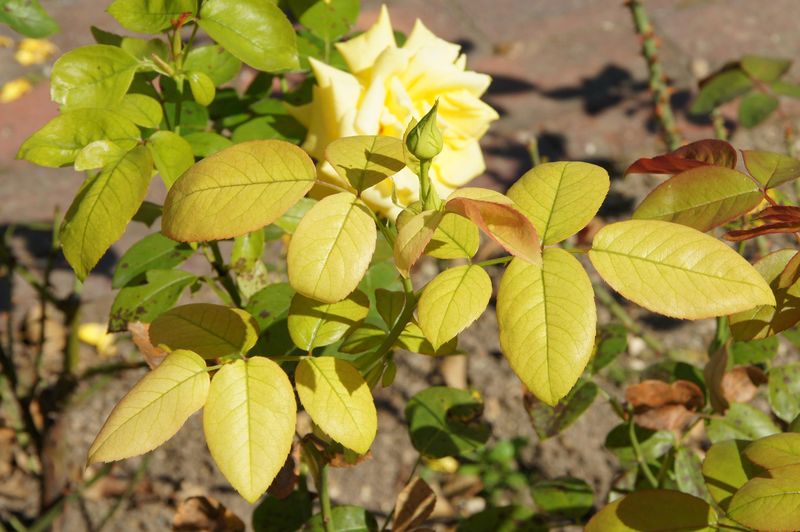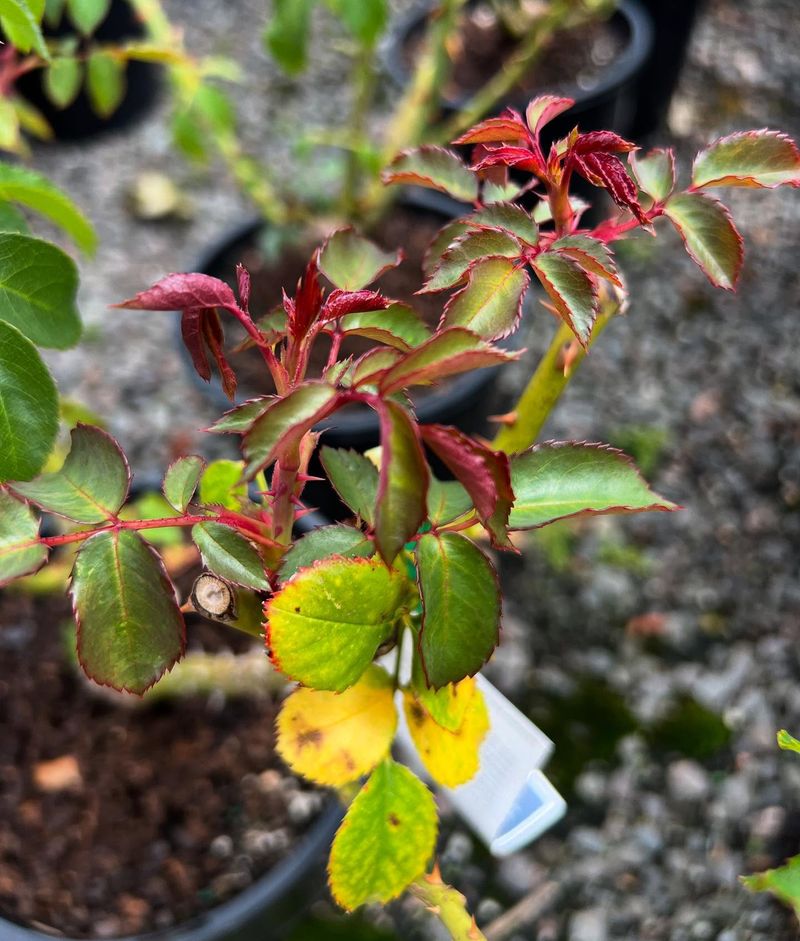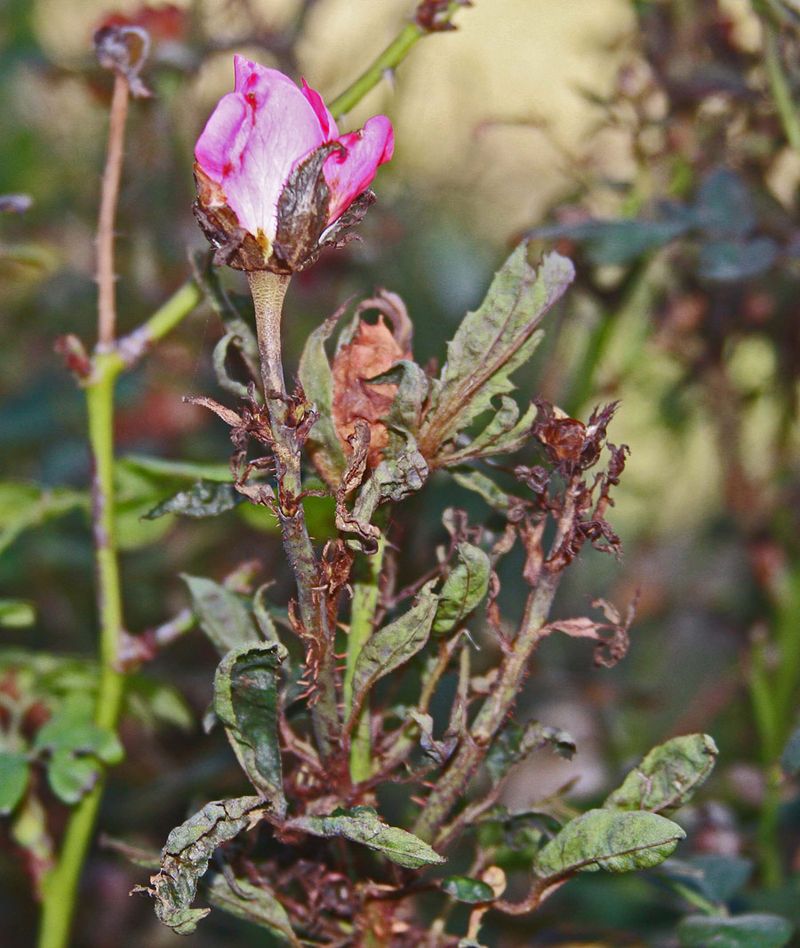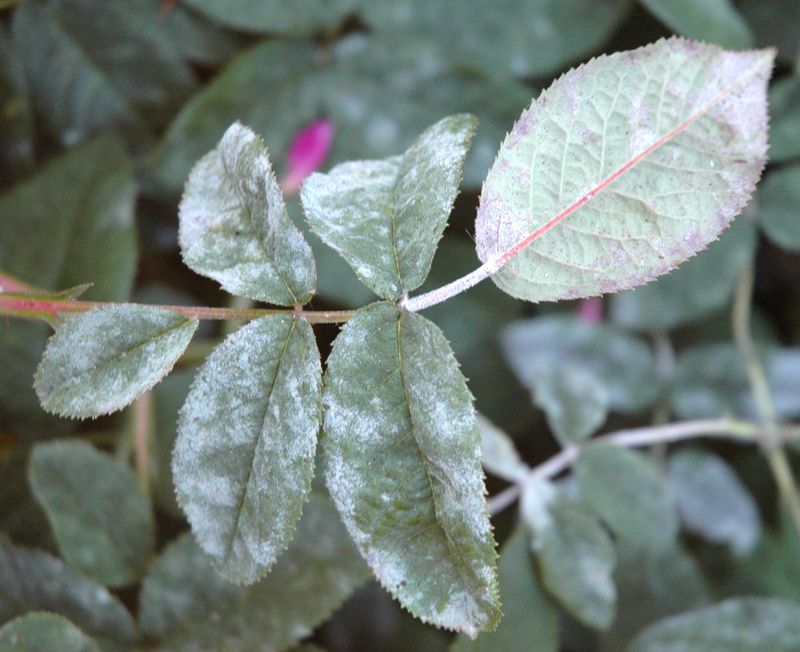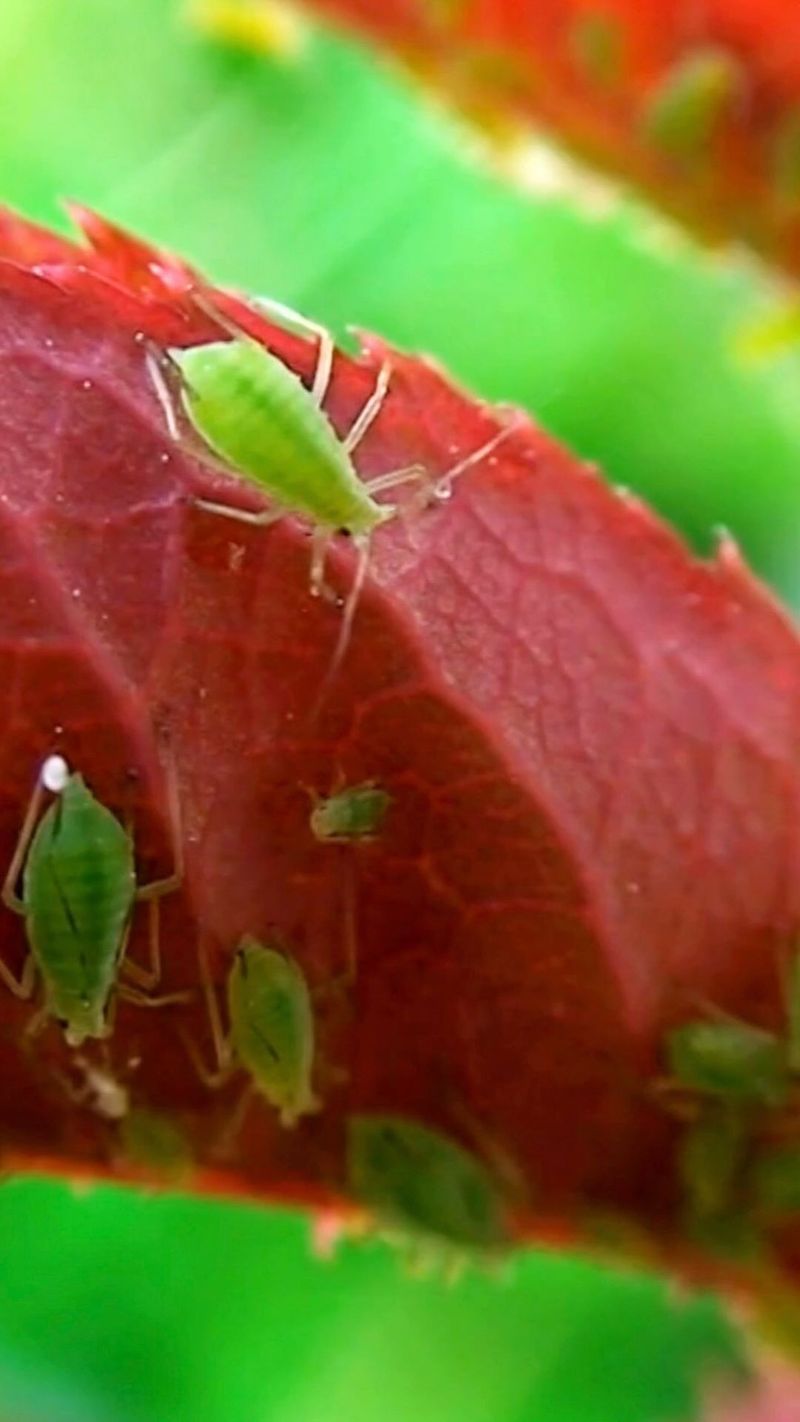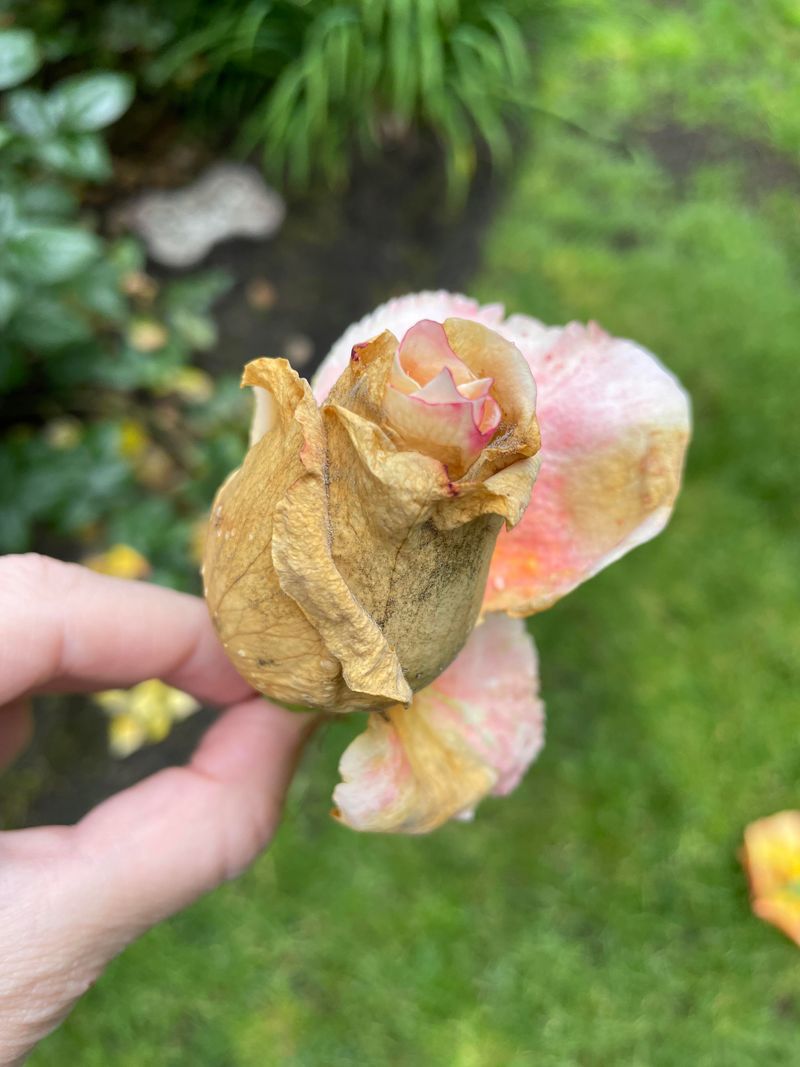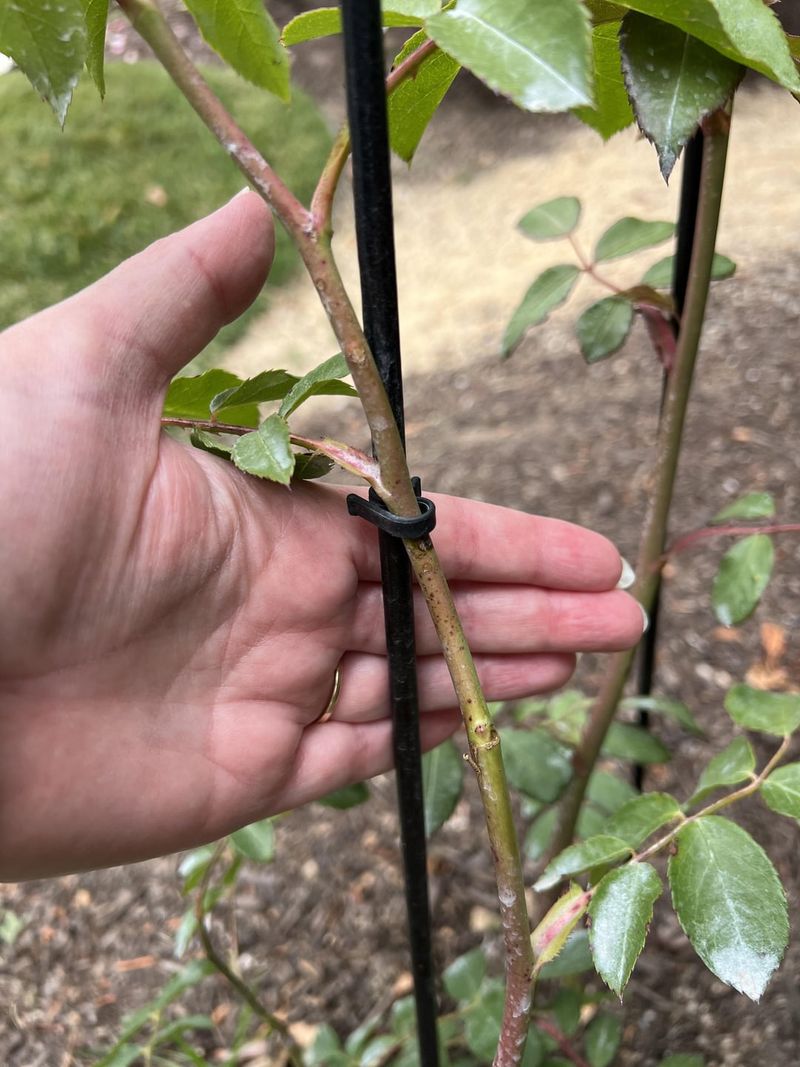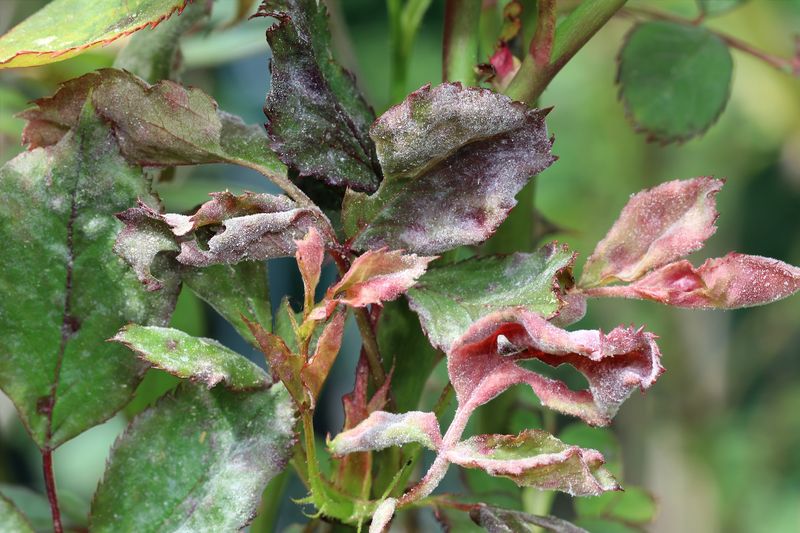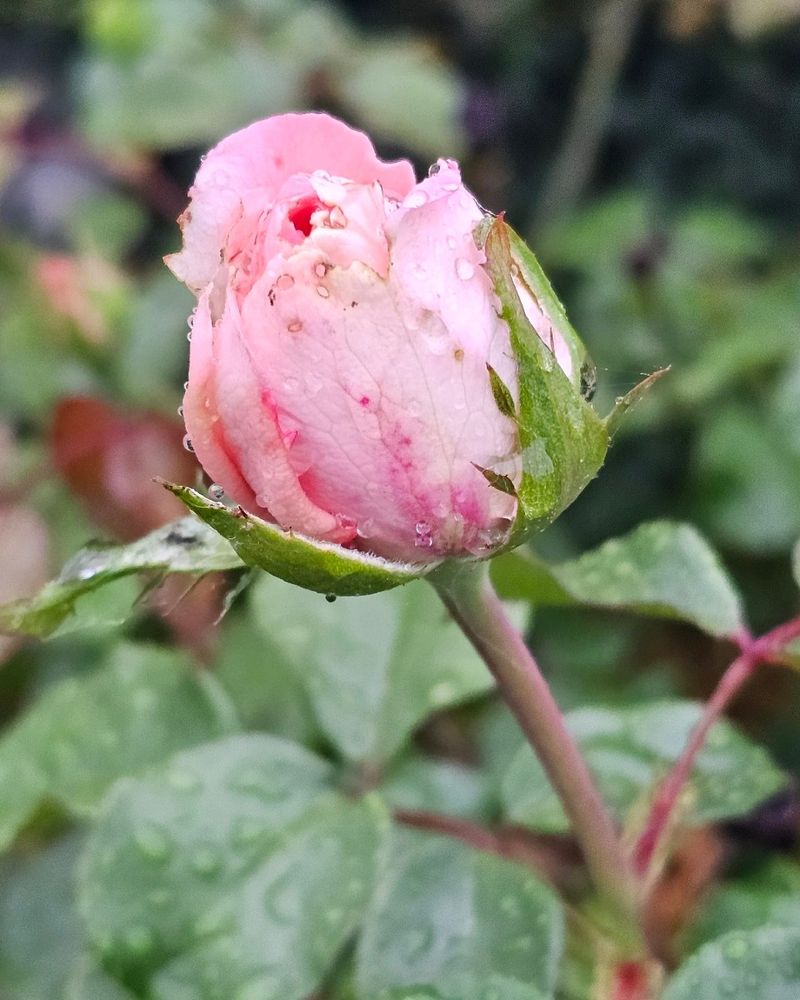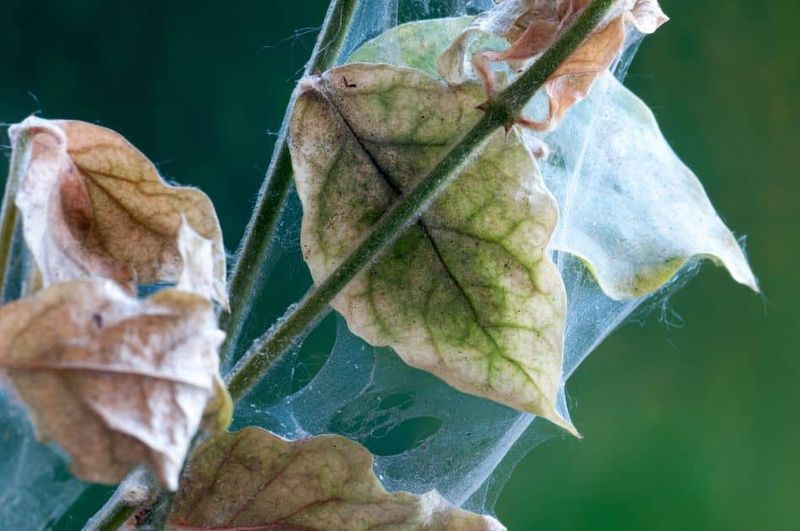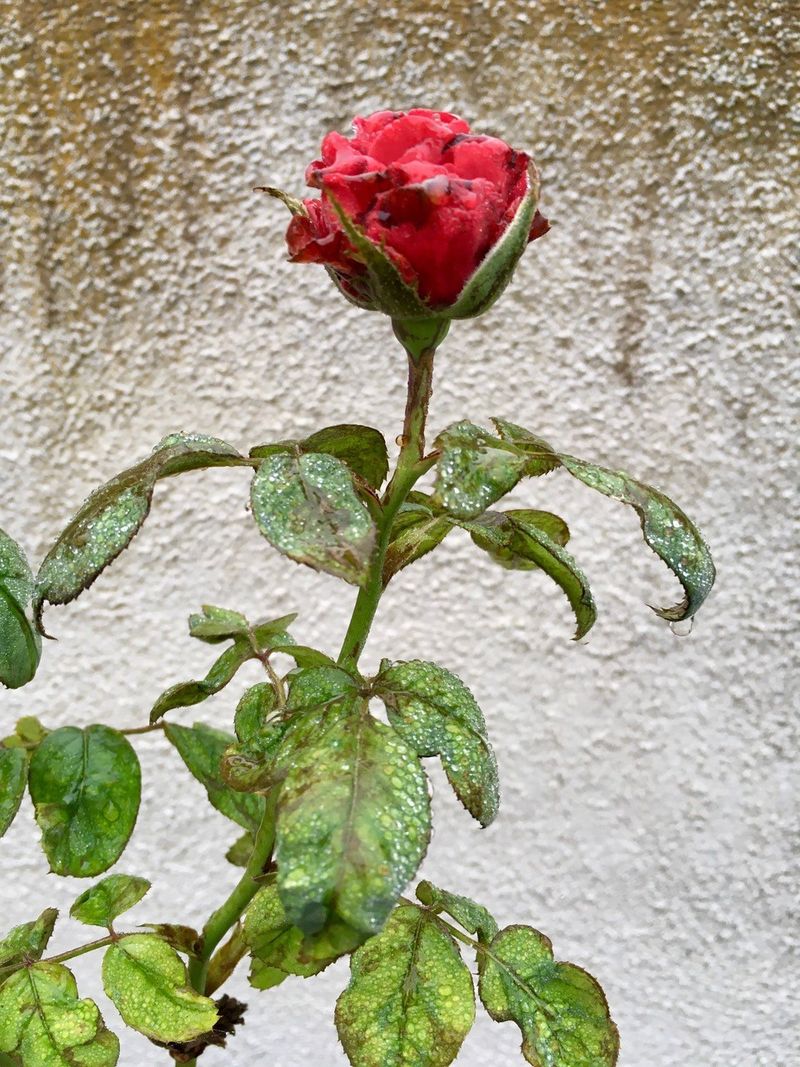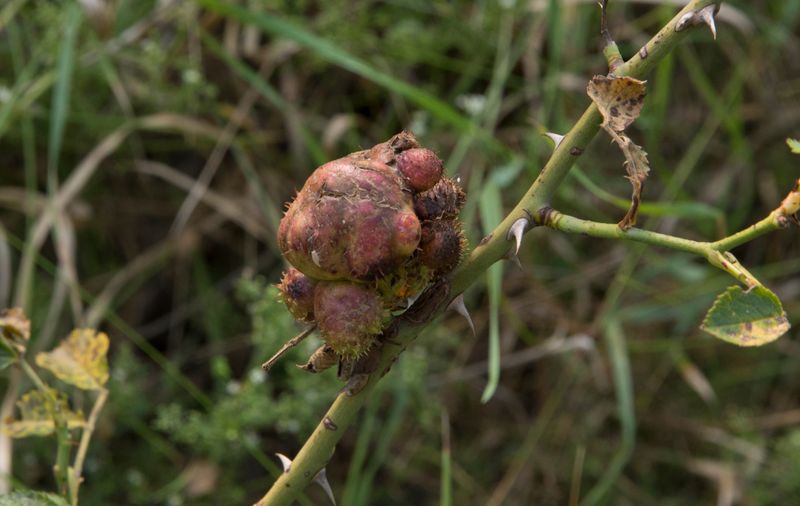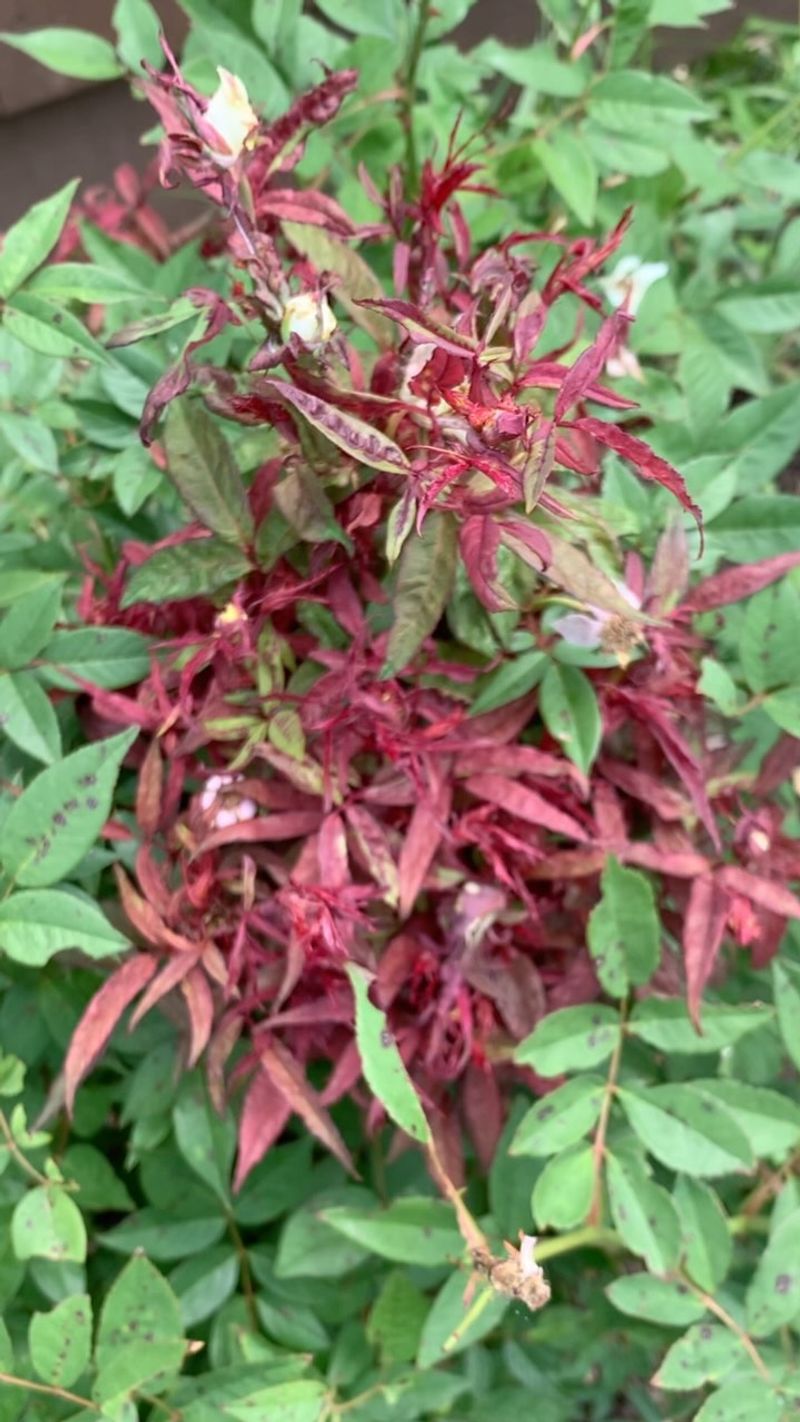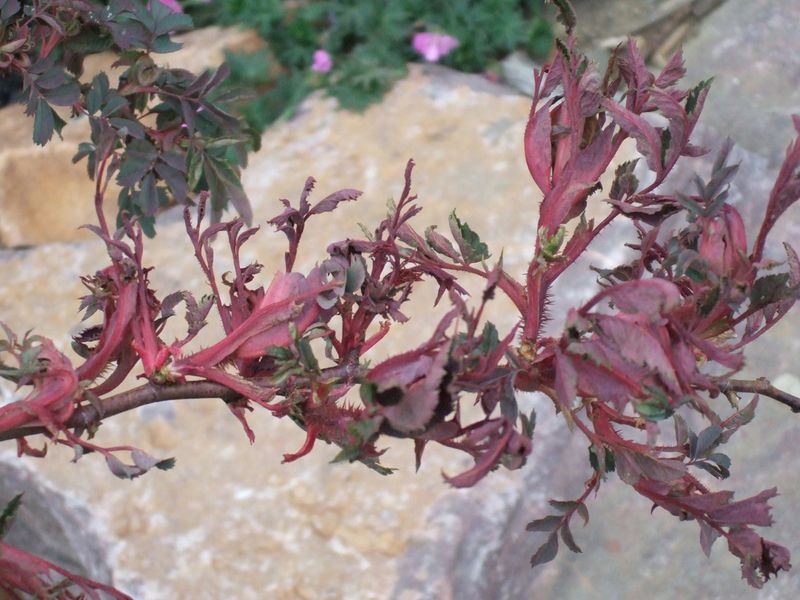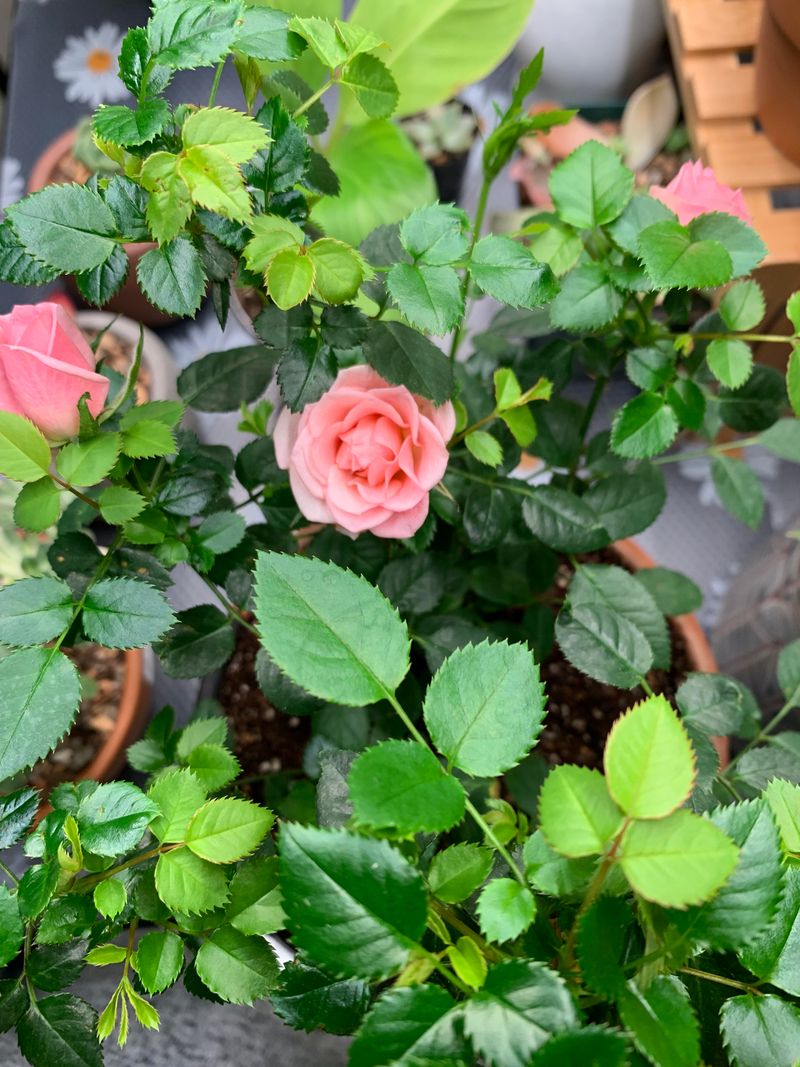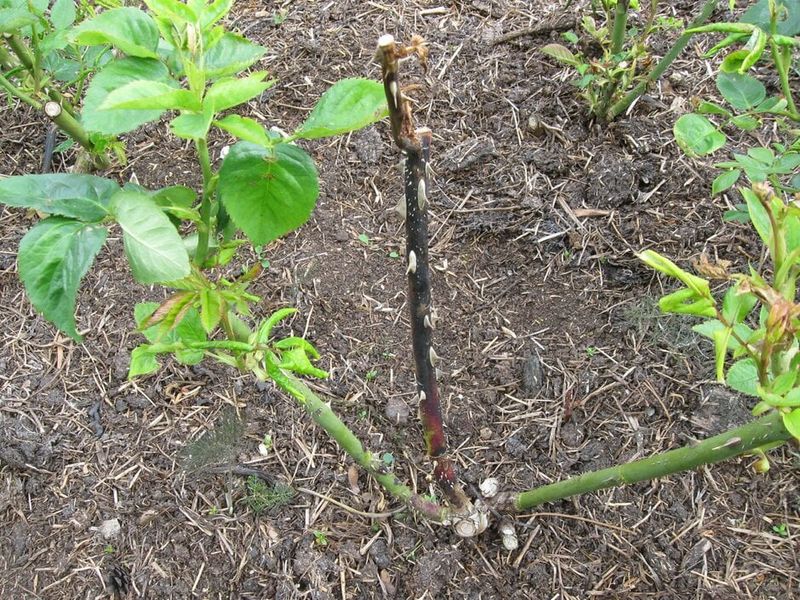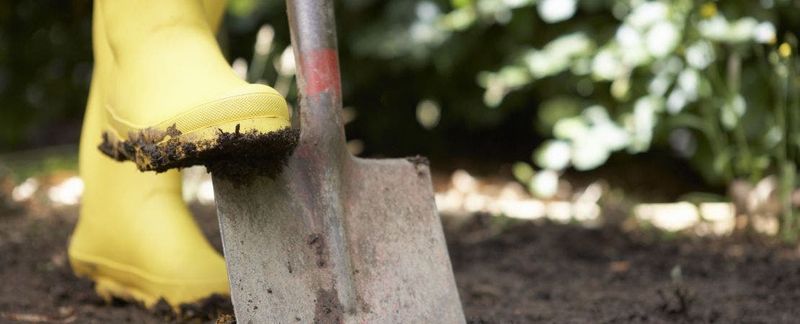Roses add beauty to any garden, but they can struggle sometimes. Spotting early signs of trouble can save your prized blooms from serious damage. From pest attacks to watering issues, knowing what to look for means you can act quickly and keep your roses healthy all season long.
1. Yellowing Leaves
Bright yellow leaves on your rose bush signal a nutrient problem, usually iron deficiency. This condition, called chlorosis, prevents roses from making food through photosynthesis.
Add iron supplements or acidic organic matter like coffee grounds to lower soil pH. Water deeply but less frequently to help roots access nutrients better. Within weeks, new growth should appear with healthier green coloring.
2. Black Spot Disease
Round black spots with fringed edges appearing on leaves spell trouble. Black spot fungus thrives in humid conditions and causes infected leaves to yellow and drop prematurely.
Remove affected leaves immediately and dispose of them in the trash, not compost. Improve air circulation by pruning crowded stems. Apply a fungicide specifically labeled for black spot on roses, following package directions carefully for timing and frequency.
3. Stunted Growth
Roses that stay small with shortened stems and tiny leaves aren’t reaching their potential. Poor soil nutrients, root problems, or incorrect pruning might be holding them back.
Feed roses with balanced fertilizer formulated specifically for flowering plants. Check for root binding if container-grown, and repot if necessary. Proper pruning techniques encourage vigorous growth – cut just above outward-facing buds at a 45-degree angle.
4. Powdery Mildew
White powdery coating on leaves and stems signals this common fungal problem. It spreads quickly in warm days and cool nights, especially when air circulation is poor.
Spray affected plants with a solution of 1 tablespoon baking soda mixed with 1 gallon of water and a few drops of dish soap. Apply in morning so leaves dry completely before evening. Space plants properly to improve airflow, and avoid overhead watering that wets foliage.
5. Aphid Infestation
Clusters of tiny green, black, or red insects gathering on new growth and buds are aphids sucking plant juices. They leave behind sticky honeydew that attracts ants and promotes black sooty mold.
Blast aphids off with a strong stream of water from your hose. Repeat every few days as needed. For persistent problems, introduce beneficial insects like ladybugs or lacewings that eat aphids. Insecticidal soap works well for severe infestations without harming pollinators.
6. Wilting Blooms
Flowers that droop and fade quickly instead of opening fully point to water stress. Either too much or too little moisture can cause premature wilting.
Check soil moisture by inserting your finger about 2 inches deep – if dry, water thoroughly at the base. If soggy, improve drainage by adding organic matter to soil. Morning watering allows foliage to dry before evening, reducing disease risk. Mulch helps maintain consistent soil moisture.
7. Cane Borers
Perfectly round holes in stems with dying canes above them reveal cane borer damage. These insect larvae tunnel inside stems, disrupting water and nutrient flow.
Prune affected canes several inches below the entry hole, cutting until you see clean, white pith. Seal fresh cuts with white glue to prevent new infestations. Always use sharp, clean pruners to avoid crushing stems, which attracts borers. Dispose of infested canes promptly.
8. Distorted Leaves
Curled, twisted, or puckered leaves often mean rose leaf-rolling insects or rose mosaic virus. Leaf-rollers create protective shelters by folding leaves, while viruses cause unusual mottling patterns.
For leaf-rollers, manually remove and destroy affected leaves. Beneficial insects like parasitic wasps help control them naturally. Virus-infected plants unfortunately can’t be cured – remove and destroy severely affected plants to prevent spread. Always buy certified virus-free plants from reputable nurseries.
9. Brown Leaf Edges
Crispy brown margins on leaves while centers remain green typically indicate drought stress or fertilizer burn. The browning occurs as plant tissues die from lack of water or salt buildup.
Water more deeply but less frequently to encourage deeper root growth. Apply one inch of water weekly during dry periods. If fertilizer burn is suspected, flush soil with plenty of water to leach away excess salts. Always follow package directions for fertilizer application rates.
10. Spider Mite Damage
Tiny yellow specks on leaves that later turn bronzed or dusty-looking indicate spider mites. These microscopic pests thrive in hot, dry conditions and spin fine webbing between leaves and stems.
Increase humidity around plants by misting regularly. Spray leaves forcefully with water, including undersides where mites hide. For serious infestations, apply insecticidal soap or horticultural oil, making sure to cover all leaf surfaces. Repeat applications weekly until mites are gone.
11. Bud Blast
Flower buds that turn brown and fail to open, often called bud blast, frustrate rose enthusiasts. Weather fluctuations, thrips, or botrytis fungus are common culprits.
Remove affected buds promptly to prevent disease spread. Check inside buds for tiny thrips insects – treat with insecticidal soap if found. Avoid overhead watering that can splash fungal spores. During rainy periods, apply fungicide labeled for botrytis to protect developing buds.
12. Gall Formation
Strange swollen growths on stems or leaves, called galls, indicate insect or bacterial invasion. Rose galls rarely kill plants but can redirect energy and weaken overall health.
Prune away stem galls completely, cutting several inches below the growth. Clean tools between cuts with rubbing alcohol to prevent spreading disease. Mossy rose gall wasps create fuzzy green or red growths – these cause minimal damage and can be left alone if appearance doesn’t bother you.
13. Root Problems
General decline without obvious above-ground causes often points to root issues. Roots damaged by digging, disease, or poor drainage can’t support healthy growth.
Gently excavate soil around the base to check root health – healthy roots are firm and light-colored inside. Improve drainage by adding organic matter or raising beds in wet areas. For container roses, ensure pots have adequate drainage holes and never let them sit in water.
14. Rose Rosette Disease
Unusual red shoots with excessive thorns and distorted, fern-like growth signal the devastating rose rosette disease. Spread by tiny mites, this viral disease has no cure and eventually kills infected plants.
Remove and destroy affected plants completely, including roots. Don’t compost them. Create barriers between roses using non-host plants. Control wild multiflora roses nearby that harbor the disease. When replacing roses, wait at least month and choose varieties with some resistance.
15. Weak Flowering
Roses producing fewer blooms or smaller flowers than normal might need attention. Inadequate sunlight, improper pruning, or nutrient deficiencies commonly cause poor flowering.
Ensure roses receive at least 6 hours of direct sunlight daily. Fertilize with phosphorus-rich formula (the middle number in fertilizer ratios) to encourage blooming. Deadhead spent flowers promptly to redirect energy to new buds. Proper seasonal pruning removes old wood and stimulates fresh flowering stems.
16. Winter Dieback
Brown, dead canes appearing after winter reveal cold damage. Roses that weren’t properly winterized can suffer partial or complete dieback in harsh conditions.
Prune dead portions back to healthy tissue (green inside when scraped). Apply proper winter protection before first freeze – mound soil or mulch 8-12 inches around base of plants. In very cold regions, consider rose cones, burlap wraps, or other commercial protectors. Choose cold-hardy varieties suited to your growing zone.
17. Soil Compaction
Hard, compacted soil around roses restricts root growth and water penetration. Plants appear stressed despite adequate watering as roots struggle to expand and access nutrients.
Loosen soil gently with garden fork, being careful not to damage roots. Add organic matter like compost to improve soil structure. Apply 2-3 inches of mulch around plants, keeping it away from stems. Avoid walking around rose beds, which compresses soil. Create dedicated stepping stones if access is needed.

